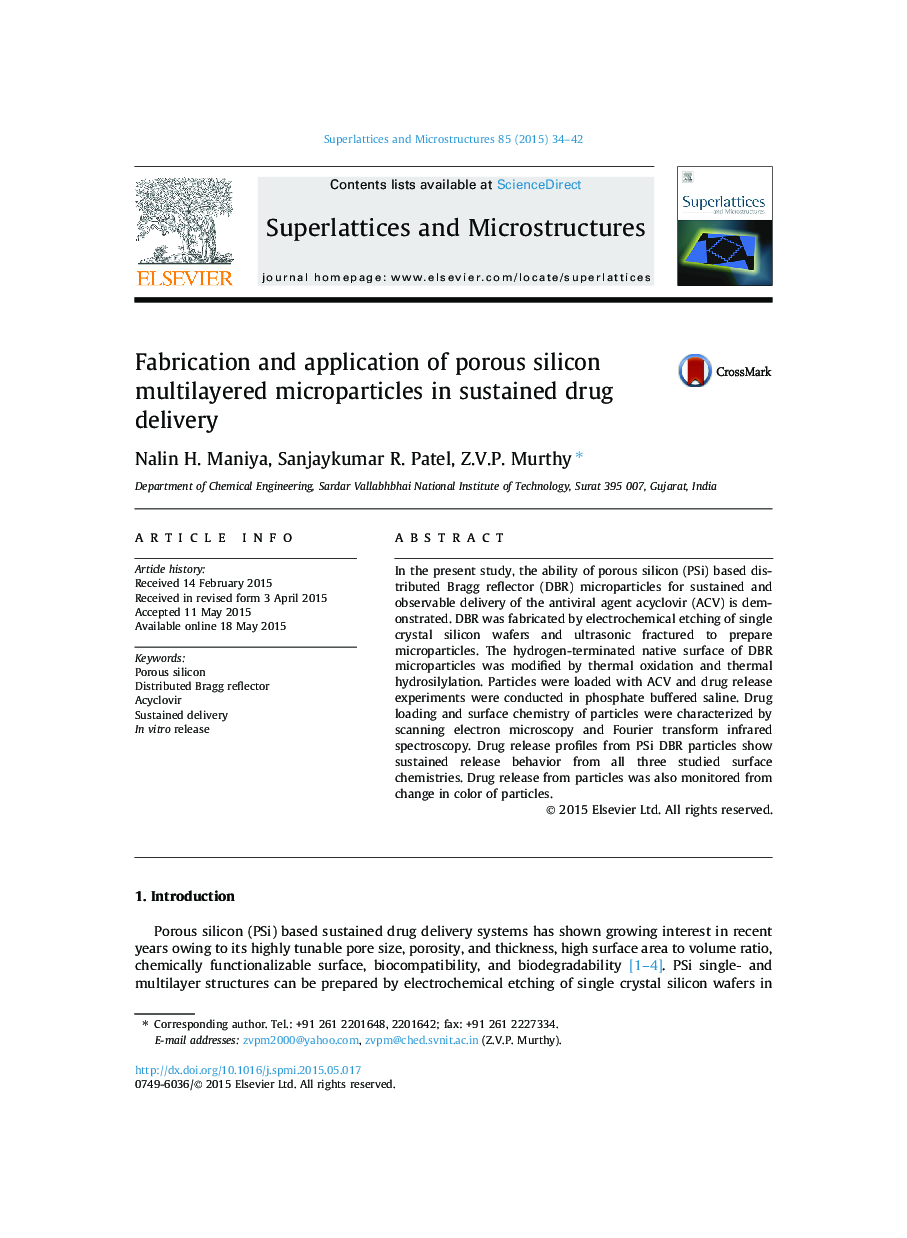| Article ID | Journal | Published Year | Pages | File Type |
|---|---|---|---|---|
| 1552980 | Superlattices and Microstructures | 2015 | 9 Pages |
•Porous silicon (PSi) distributed Bragg reflector (DBR) was engineered.•DBR microparticles were prepared by ultrasonic fracture of freestanding films.•Acyclovir (ACV) was loaded into native, oxidized, and hydrosilylated DBR particles.•DBR particles showed sustained release behavior from all three studied surfaces.•Change in color of microparticles was observed as drug releases from particles.
In the present study, the ability of porous silicon (PSi) based distributed Bragg reflector (DBR) microparticles for sustained and observable delivery of the antiviral agent acyclovir (ACV) is demonstrated. DBR was fabricated by electrochemical etching of single crystal silicon wafers and ultrasonic fractured to prepare microparticles. The hydrogen-terminated native surface of DBR microparticles was modified by thermal oxidation and thermal hydrosilylation. Particles were loaded with ACV and drug release experiments were conducted in phosphate buffered saline. Drug loading and surface chemistry of particles were characterized by scanning electron microscopy and Fourier transform infrared spectroscopy. Drug release profiles from PSi DBR particles show sustained release behavior from all three studied surface chemistries. Drug release from particles was also monitored from change in color of particles.
Graphical abstractFigure optionsDownload full-size imageDownload as PowerPoint slide
